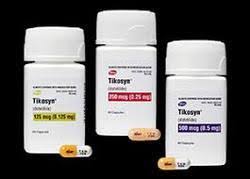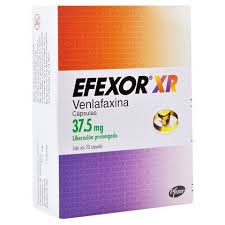Hydrocodone and Acetaminophen
An in-depth examination of Hydrocodone and Acetaminophen is presented below, detailing their mechanisms of action, recommended dosages, potential side effects, associated risks, and additional relevant information.

Hydrocodone (Opioid Component)
Mechanism of Action:
Hydrocodone functions as an opioid analgesic, primarily alleviating pain by binding to specific opioid receptors located in the brain and spinal cord, particularly the mu-opioid receptor. This interaction effectively inhibits the transmission of pain signals and modifies the brain’s interpretation of pain. Furthermore, hydrocodone exerts a depressant effect on the central nervous system (CNS), which can induce sensations of euphoria and relaxation, thereby mitigating pain and discomfort.
As a semi-synthetic opioid derived from codeine, hydrocodone is less potent than more powerful opioids such as morphine or fentanyl; however, it still poses a considerable risk for addiction and respiratory depression.
Indications:
– Pain management: Hydrocodone is indicated for the treatment of moderate to severe pain, including postoperative pain, injury-related pain, and pain associated with conditions like cancer or arthritis.
– Cough suppression: It is also utilized as a cough suppressant in certain combination medications, particularly for persistent dry coughs.
Common Dosage Forms:
– Oral tablets (in combination with acetaminophen): Available in various strengths, including 5 mg, 7.5 mg, and 10 mg of hydrocodone, combined with either 325 mg or 500 mg of acetaminophen.
– Oral liquid formulations: For patients who have difficulty swallowing pills, hydrocodone can be prescribed in liquid form.
– Extended-release formulations: Hydrocodone may also be available in a sustained-release format for chronic pain management, often without acetaminophen.
Side Effects of Hydrocodone:
Common:
– Drowsiness, dizziness, and lightheadedness
– Nausea and vomiting
– Constipation (a prevalent side effect associated with opioids)
– Dry mouth
– Confusion or difficulty in concentrating
Serious:
– Respiratory depression (characterized by slow or difficult breathing)
– Low blood pressure (hypotension)
– Bradycardia (reduced heart rate)
– Hypoventilation (insufficient breathing)
– Seizures (though infrequent)
– Severe allergic reactions (such as rash)
Warnings and Precautions:
Respiratory Depression: The use of opioids such as hydrocodone can lead to a significant reduction in respiratory function, potentially resulting in dangerously low breathing rates. This risk is particularly pronounced in individuals with pre-existing respiratory issues (e.g., asthma, COPD) or when hydrocodone is taken in conjunction with other central nervous system depressants, including alcohol, benzodiazepines, or sedatives.
Addiction Risk: Hydrocodone carries a substantial risk of abuse and addiction, particularly with extended use or misuse. Dependence on opioids can develop even when the medication is used as prescribed, and abrupt cessation may lead to withdrawal symptoms.
Tolerance: Over time, individuals may find that they require increasing doses to achieve the same therapeutic effect, which raises the risk of overdose and other serious complications.
Caution with Liver Disease: As hydrocodone is metabolized in the liver, individuals with liver disorders may need to have their dosages adjusted accordingly.
Not Recommended for Children: The use of hydrocodone in pediatric patients is generally discouraged due to the heightened risk of severe adverse effects, including respiratory depression.
Acetaminophen (Non-Opioid Component)
Mechanism of Action:
Acetaminophen, also referred to as paracetamol, is classified as a non-opioid analgesic and antipyretic agent. While its precise mechanism of action remains partially understood, it is thought to:
– Inhibit the production of prostaglandins in the brain, which are substances that contribute to pain, inflammation, and fever.
– Unlike non-steroidal anti–inflammatory drugs (NSAIDs), acetaminophen is not recognized for its anti-inflammatory properties, as it does not significantly diminish inflammation within the body.
Indications:
– Pain relief: Acetaminophen is effective for alleviating mild to moderate pain, including headaches, muscle aches, menstrual cramps, and minor arthritis.
– Fever reduction: It is frequently utilized to lower fever associated with infections or other medical conditions.
Common Dosage Forms:
– Tablets: Available in various strengths, typically including 325 mg, 500 mg, and 650 mg.
– Liquid formulations: Offered for both children and adults who may have difficulty swallowing tablets.
– Extended-release tablets: Designed for the management of pain over an extended period.
Side Effects of Acetaminophen:
Common: Generally well-tolerated with minimal adverse effects
Liver Toxicity: Acetaminophen overdose is a primary contributor to acute liver failure. Even minimal consumption of alcohol or other substances that impact liver function can heighten the risk of liver injury.
Renal Damage: Prolonged use of elevated doses may compromise kidney performance.
Severe Allergic Reactions: Although rare, symptoms may include rash, swelling, and difficulty in breathing.
Warnings and Precautions:
Liver Damage: The most critical concern associated with acetaminophen is liver toxicity, especially when exceeding 4,000 mg within a single day. Individuals with existing liver conditions, those who consume alcohol heavily, or those taking other liver-affecting medications should exercise caution when using acetaminophen.
Avoid Alcohol: The combination of alcohol and acetaminophen significantly raises the likelihood of liver damage.
Monitor for Accidental Overdose: Numerous over-the-counter medications (such as cold remedies and combination pain relievers) contain acetaminophen, making it easy to unintentionally surpass the recommended maximum dosage.
Hydrocodone/Acetaminophen Combination (e.g., Vicodin, Norco, Lortab)
Mechanism of Action (Combined):
Hydrocodone: This component alleviates pain by modifying pain perception within the brain and spinal cord, and it also possesses some cough-suppressing properties.
Acetaminophen: It operates at the peripheral level to mitigate pain and reduce fever.
The synergy of this combination enhances analgesic effects, as hydrocodone addresses pain through opioid pathways while acetaminophen contributes additional pain-relieving properties. This combination is particularly effective for managing moderate to severe pain, especially when hydrocodone alone proves inadequate.
Dosage:
The dosage of hydrocodone/acetaminophen is generally determined by the hydrocodone content. Common dosages include:
5 mg / Acetaminophen 325 mg
7.5 mg / Acetaminophen 325 mg
10 mg / Acetaminophen 325 mg
These tablets are typically administered every 4 to 6 hours as needed for pain relief, with the specific dose tailored to the intensity of the pain and the individual’s response.
Common Brand Names:
Vicodin
Norco
Lortab
Maxidone
Zydone
Side Effects of the Combination:
Hydrocodone-related effects include:
– Drowsiness, dizziness, and confusion
– dysphonia, nausea, and hurl
– Serious risk of inhalation dispiritedness
Acetaminophen-related effects include:
– Liver toxicity in cases of overdose
– Rare allergic reactions
– Renal toxicity associated with chronic use
Important Considerations:
– Risk of Addiction and Misuse: mortal is confidential as an administrator materiality due to Its for addiction and should be utilized strictly as prescribed.
– Monitoring Liver Health: Due to the residence of acetaminophen, it is advisable to regularly assess liver function, particularly during prolonged use.
– Development of Tolerance and subordination: Prolonged use of hydrocodone may lead to tolerance, necessitating higher doses for the same analgesic effect, and physical subordination, characterized by withdrawal symptoms upon cessation.
– Overdose Risk: The combination of hydrocodone and acetaminophen poses a significant risk of overdose, particularly when taken in excessive amounts or alongside other central nervous system depressants such as alcohol or benzodiazepines.
Symptoms of Overdose:
– Hydrocodone: Symptoms may include slow or irregular breathing, profound drowsiness, and loss of consciousness.
– Acetaminophen: Symptoms may manifest as nausea, vomiting, loss of appetite, confusion, and, if untreated, can progress to liver failure.
Conclusion:
The combination of hydrocodone and acetaminophen serves as an effective analgesic for moderate to severe pain. However, both components present considerable risks:
– Hydrocodone is associated with addiction potential, respiratory depression, and various central nervous system effects.
– Acetaminophen poses a risk of severe liver damage in cases of overdose or when consumed with alcohol.
It is imperative to adhere to the prescribed dosage, avoid exceeding the recommended amount, and refrain from combining this medication with alcohol or other central nervous system depressants unless specifically instructed by a healthcare professional. Should any side effects arise or concerns regarding long-term use develop, it is crucial to consult a healthcare provider without delay.






